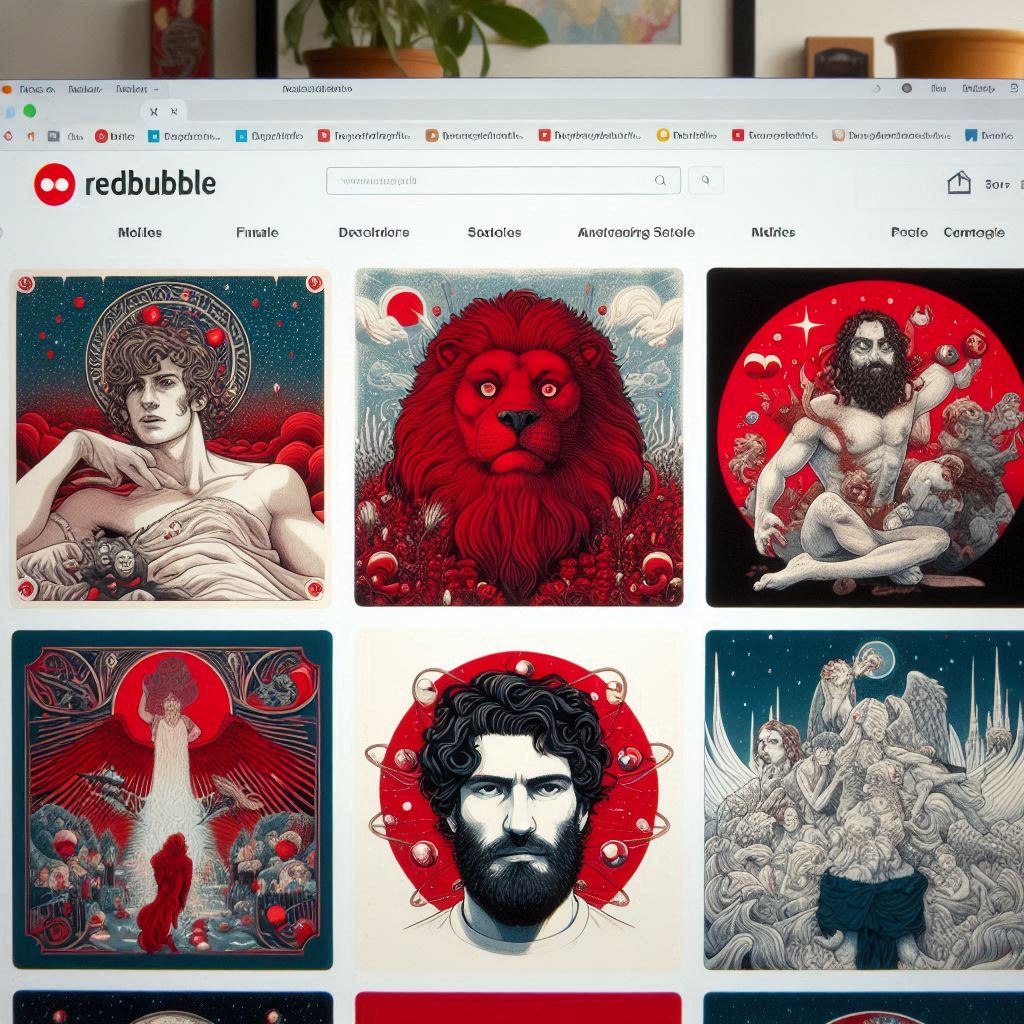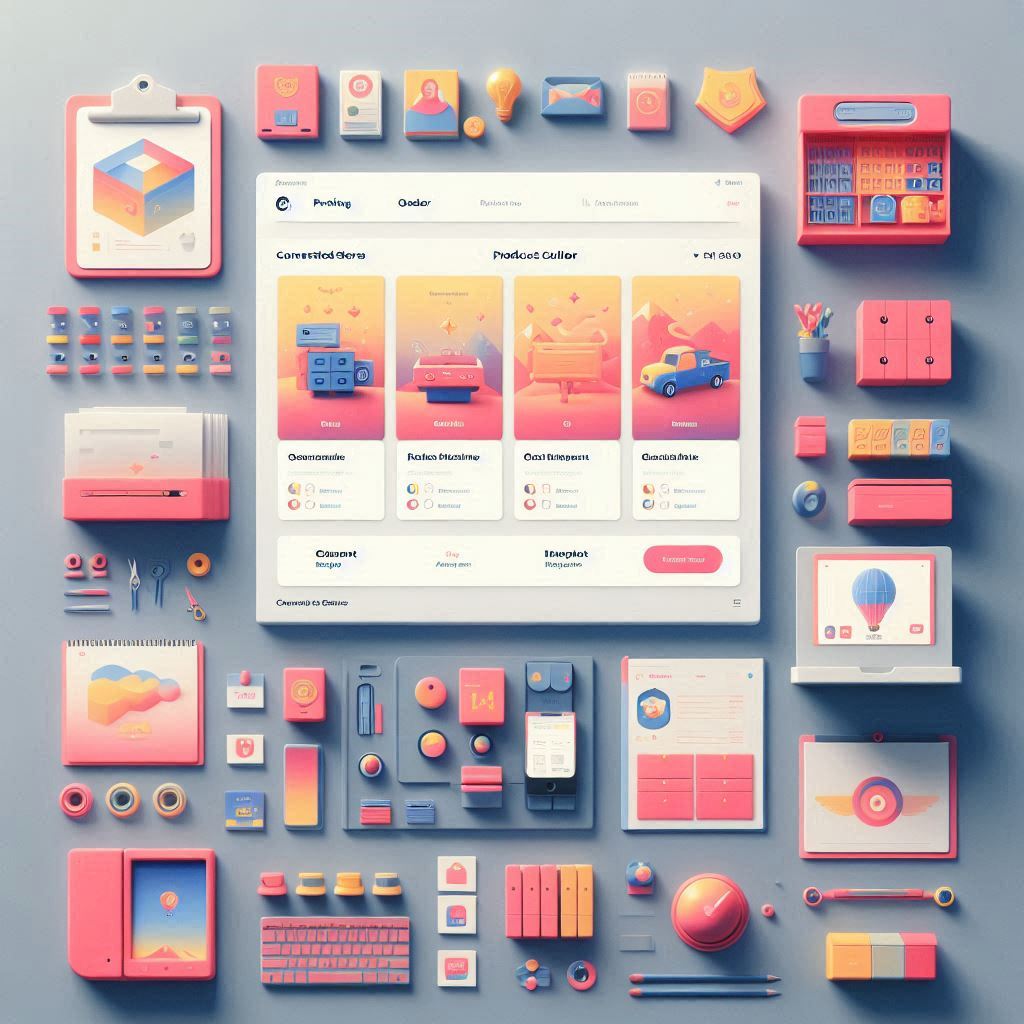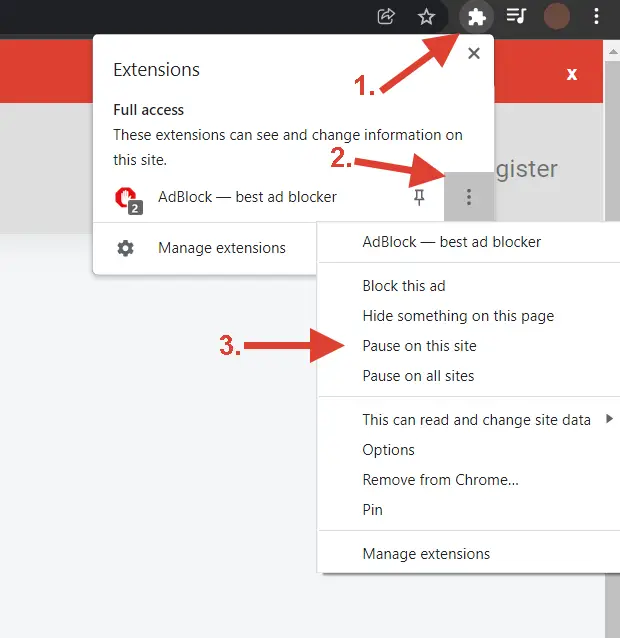Print-on-demand (POD) is booming. For creative entrepreneurs, artists, and anyone with an eye for design, it’s a golden opportunity to launch a business without the headache of managing inventory. But with a plethora of POD services vying for your attention, choosing the right one can feel overwhelming. Two titans stand out in this arena: Redbubble and Printful. Each offers a unique approach to POD, leaving many wondering: which one is truly the best?
This comprehensive guide dissects the Redbubble vs. Printful debate, leaving no stone unturned. We’ll delve into their features, pricing, pros and cons, and even explore alternative options. By the end, you’ll have a clear understanding of which platform best aligns with your creative vision and business goals.
- Understanding the Power of Print-on-Demand
- Redbubble: A Marketplace Made for Artists
- Printful: Your Production Powerhouse for Ecommerce
- Redbubble vs. Printful: A Head-to-Head Showdown
- Exploring Alternative POD Services
- Which Platform Is Your Perfect Match?
- FAQs About Redbubble vs. Printful
- Conclusion
Understanding the Power of Print-on-Demand
Print-on-demand is a revolutionary business model that eliminates the risks associated with traditional manufacturing. Instead of investing in bulk inventory, POD platforms allow you to create products only when a customer orders them. This means no upfront costs, minimal storage needs, and the freedom to experiment with diverse designs and product lines.
Here’s how it works: You create a design and upload it to a POD platform, where it’s applied to a range of products like t-shirts, mugs, stickers, and more. When a customer purchases your product, the platform handles the printing, packaging, shipping, and even customer service. You simply sit back, collect your profits, and focus on what you love – designing!
Redbubble: A Marketplace Made for Artists

Redbubble is an online marketplace built for independent artists. It’s a platform where creatives can showcase their designs on a diverse range of products and connect with a global audience of millions. Redbubble’s strength lies in its vast artist community, creating a vibrant ecosystem of unique and expressive designs.
How Redbubble Works:
- Create a Redbubble Account: It’s free and easy! Simply provide your email address and choose a username.
- Upload Your Designs: Redbubble accepts various file formats, including PNG, JPG, and GIF. Ensure your designs meet their guidelines for size and resolution.
- Select Products: Browse Redbubble’s extensive product catalog and choose the items you want to feature your designs on. From t-shirts and hoodies to phone cases and stickers, the options are abundant.
- Set Your Prices: Redbubble provides base prices for each product. You set your markup, which determines your profit margin. Remember to factor in Redbubble’s commission when calculating your earnings.
- Create Listings: Write catchy titles and descriptions for your products, using relevant keywords to help customers find them. Redbubble also allows you to add tags for improved search visibility.
- Promote Your Shop: While Redbubble benefits from organic traffic, promoting your shop on social media and other platforms can significantly boost your sales.
- Get Paid: Redbubble pays out earnings monthly via PayPal or direct deposit, provided you’ve reached their minimum threshold.
Redbubble’s Strengths:
- Built-in Marketplace: Tap into Redbubble’s existing customer base and benefit from organic traffic generated through their marketplace.
- Simple Setup: Creating an account and listing products is remarkably easy, making it ideal for beginners.
- No Monthly Fees: Redbubble doesn’t charge monthly subscription fees, allowing you to start selling without any upfront costs.
- Built-in Analytics: Track your sales performance, customer behavior, and popular products with Redbubble’s built-in analytics dashboard.
Redbubble’s Weaknesses:
- Limited Pricing Control: Redbubble’s base product prices fluctuate, impacting your profit margins. You’ll need to monitor these changes and adjust your pricing accordingly.
- No Branding Options: Redbubble’s branding is prominent on products and packaging, limiting your ability to establish a unique brand identity.
- Monthly Payouts: Earnings are paid out once a month, potentially delaying your cash flow.
- Limited Integrations: Redbubble primarily focuses on its marketplace, offering limited integrations with external ecommerce platforms.
Printful: Your Production Powerhouse for Ecommerce

Printful is a production and fulfillment powerhouse designed to seamlessly integrate with your own ecommerce store. Unlike Redbubble, Printful doesn’t operate a marketplace. Instead, it acts as your behind-the-scenes partner, handling production and shipping while you manage your storefront and marketing.
How Printful Works:
- Connect Your Store: Printful integrates seamlessly with popular ecommerce platforms like Shopify, Etsy, WooCommerce, and more.
- Choose Products: Explore Printful’s diverse catalog of high-quality products, ranging from apparel and accessories to home décor and wall art.
- Create Designs: Utilize Printful’s intuitive mockup generator to create stunning product visuals. You can upload your designs, add text, and even use pre-made clipart.
- Set Your Prices: Printful provides base prices for each product, and you have complete control over setting your retail prices and profit margins.
- Fulfill Orders: When a customer orders from your store, the order is automatically sent to Printful for fulfillment. Printful handles printing, packaging, and shipping directly to your customer.
- Manage Your Business: Track your orders, view fulfillment progress, and manage customer service through Printful’s user-friendly dashboard.
Printful’s Strengths:
- Wide Range of Integrations: Connect Printful to your existing ecommerce store or choose from a variety of supported platforms.
- Full Pricing Control: Set your own retail prices and profit margins, ensuring maximum control over your earnings.
- White-Labeling Options: Create a unique brand identity by adding your logo to products, packing slips, and even custom packaging.
- Faster Fulfillment Times: Printful’s efficient in-house production ensures faster turnaround times, enhancing customer satisfaction.
- Excellent Customer Support: Access reliable and responsive support through multiple channels, including live chat, email, and a comprehensive help center.
Printful’s Weaknesses:
- Requires Separate Ecommerce Store: You’ll need to establish your own store on a supported platform, which may involve setup costs and ongoing fees.
- Requires Marketing Efforts: You’re responsible for driving traffic to your store and marketing your products.
- No Built-in Analytics: Printful relies on integrations with your ecommerce platform for sales and customer data analytics.
Redbubble vs. Printful: A Head-to-Head Showdown
Now, let’s compare these POD giants head-to-head, examining their key features side-by-side.
Pricing:
- Base Product Costs: Both platforms offer comparable base prices for common products like t-shirts and mugs. However, Printful consistently provides more competitive pricing across its entire product catalog, particularly for higher-priced items.
- Profit Margins: Printful gives you complete control over setting your prices, allowing for higher profit margins. Redbubble’s fluctuating base costs and marketplace commission can impact your earnings.
- Branding Costs: Printful offers various branding options, both free and paid. White-labeling products and adding custom packaging come at an additional cost. Redbubble doesn’t offer white-labeling, limiting branding opportunities.
Product Catalog and Customization:
- Product Variety: Printful boasts a larger and more diverse product catalog, covering a wider range of categories. While Redbubble offers a good selection, it’s more focused on apparel, accessories, and home decor items.
- Customization Options: Both platforms offer basic customization like choosing product colors and print placements. Printful provides more advanced options, including different printing techniques, embroidery, and the ability to combine techniques for unique product designs.
Fulfillment and Shipping:
- Fulfillment Times: Printful generally offers faster fulfillment times due to its in-house production processes. Redbubble relies on third-party printers, potentially causing variations in turnaround times.
- Shipping Costs: Printful provides transparent shipping costs based on product weight, destination, and shipping method. You can set flat rates or dynamically calculate shipping fees. Redbubble handles shipping costs directly with customers, providing less transparency for sellers.
Branding and Packaging:
- White-Labeling: Printful empowers you to build your brand with white-label products, packing slips, and custom packaging options.
- Redbubble Branding: All Redbubble products and packaging feature their branding, limiting opportunities for building a distinct brand identity.
Customer Support:
- Printful Support: Printful provides excellent customer support through live chat, email, and a comprehensive help center.
- Redbubble Support: Redbubble offers support through Twitter direct messages and a ticketing system. While generally responsive, their support channels are less diverse than Printful’s.
Exploring Alternative POD Services
While Redbubble and Printful are prominent players, the POD landscape is teeming with alternatives. Let’s briefly explore a few noteworthy contenders:
- Printify: Offering a vast catalog of over 800 products and a network of global print providers, Printify allows you to choose your preferred suppliers based on price, quality, and location.
- Society6: Geared towards artists and designers, Society6 features a curated marketplace and a strong focus on art prints, home décor, and lifestyle products.
- Zazzle: Boasting a vast marketplace with a wide range of customizable products, Zazzle allows sellers to create personalized gifts, stationery, and promotional items.
- Teespring: Focused on apparel and accessories, Teespring offers integrated marketing tools and a simplified approach to launching and promoting merchandise campaigns.
Each alternative platform caters to specific niches and offers unique benefits. Exploring these options can provide valuable insights for finding the perfect POD service for your specific needs.
Which Platform Is Your Perfect Match?
With the comparison complete, let’s address the crucial question: Redbubble or Printful? The answer ultimately depends on your priorities and business goals.
Redbubble shines for:
- Artists seeking a passive income stream: Redbubble’s built-in marketplace with organic traffic potential allows you to focus primarily on design creation, letting the platform handle sales and fulfillment.
- Beginners entering the POD world: Redbubble’s straightforward setup, user-friendly interface, and lack of monthly fees make it easy to get started with minimal investment.
Printful reigns supreme for:
- Ecommerce businesses desiring full control: Printful empowers you to build a branded storefront, set your prices, manage shipping, and expand your sales channels through numerous integrations.
- Sellers focused on long-term brand building: White-labeling, custom packaging, and seamless ecommerce integrations allow you to cultivate a strong brand identity and foster customer loyalty.
FAQs About Redbubble vs. Printful
Which platform offers better profit margins?
Printful generally offers better profit margins due to its transparent pricing, fixed base costs, and your ability to set your retail prices without limitations. Redbubble’s fluctuating base costs and marketplace commission can significantly impact your earnings.
Can I sell on both Redbubble and Printful simultaneously?
Absolutely! You can leverage both platforms to maximize your reach and explore different product offerings. This strategy allows you to test designs and target specific audiences based on each platform’s strengths.
Which platform is easier to use for beginners?
Redbubble’s user-friendly interface, simple setup process, and lack of complex integrations make it an easier starting point for beginners venturing into the world of POD.
What are the best-selling product categories on each platform?
- Redbubble: Popular categories include t-shirts, stickers, phone cases, art prints, and home décor items like throw pillows and mugs.
- Printful: Bestsellers encompass t-shirts, hoodies, tote bags, phone cases, posters, and wall art.
Do I need to handle customer service when using Printful?
Yes, when using Printful, you’re generally responsible for managing customer service inquiries, returns, and exchanges. However, you can leverage third-party fulfillment services for more hands-off customer support.
Does Redbubble offer any marketing tools or promotional opportunities?
Redbubble offers basic promotional tools like setting discounts and running sales. They also feature artist designs on their homepage and social media channels, providing additional exposure.
Can I use my own domain name when selling with Printful?
Yes, when integrating Printful with a custom ecommerce platform like Shopify or WooCommerce, you can connect your own domain name to your online store, fostering a professional brand image.
Conclusion
Both Redbubble and Printful offer unique approaches to print-on-demand, each catering to different needs and aspirations. Redbubble is a haven for artists seeking passive income through a simplified marketplace. In contrast, Printful empowers entrepreneurs to build branded ecommerce businesses with complete control over their products, pricing, and sales channels.
Ultimately, the “best” POD service is subjective and depends on your individual goals. By weighing the pros and cons, understanding the nuances of each platform, and considering your own priorities, you can confidently choose the perfect POD partner to launch your creative venture.
Try these free tools by Topbubbleindex
If you're looking to get started with print-on-demand, Topbubbleindex is the perfect place to begin. We offer all the digital marketing tools you need to be successful, and we're committed to keeping them free forever. Below, you'll find a few of the free tools we offer to help you get ahead of the competition and make sales easily.
- Redbubble Keyword Research
- Redbubble Tag Generator
- Redbubble Trends Finder
- Etsy Keyword Research
- Etsy Tag Generator
- Etsy Trends Finder
- Design Editor
- Image Background Remover
- Image Portrait Generator
- Blogs
- Calendar Holidays
And still counting! If you're still not impressed, try the Topbubbleindex tools for free. Don't hesitate to contact us for suggestions, complaints, or just feedback. We are always working on to keep the Topbubbleindex better.

